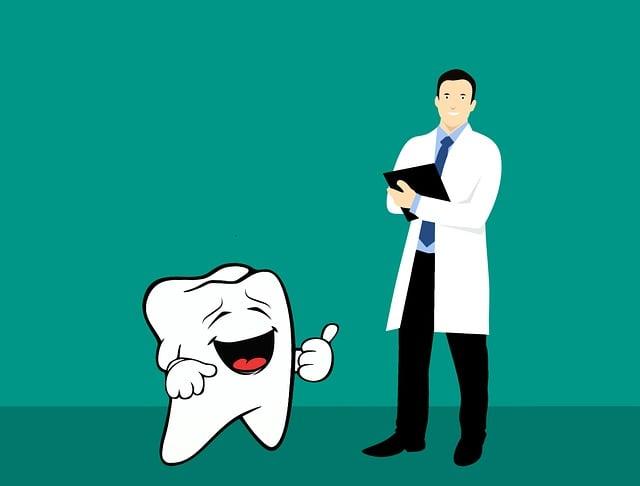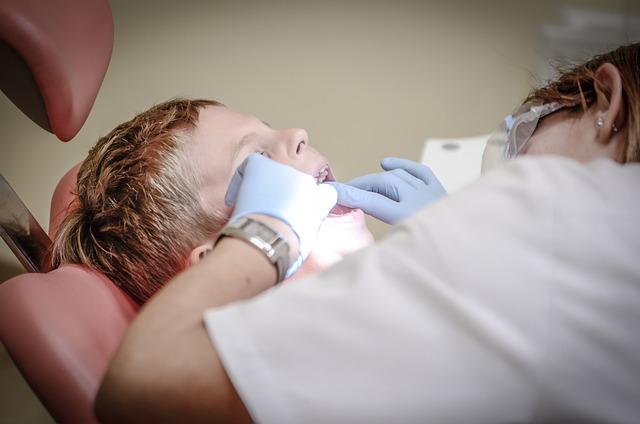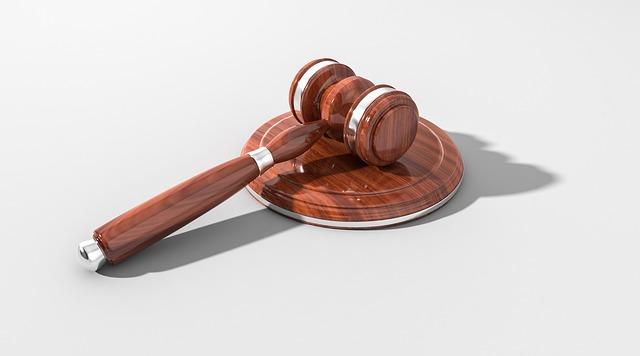Are Teeth Whitening Strips Safe? Essential Facts You Must Know
Are you dreaming of a bright, radiant smile? Teeth whitening strips seem like an easy solution, promising sparkling results in the comfort of your own home. But before you dive into the world of pearly whites, it’s crucial to understand the safety behind these popular whitening strips. In this article, we will unravel the essential facts that you must know to make an informed decision. Let’s explore the safety concerns, effectiveness, and potential risks associated with teeth whitening strips, ensuring your path to a dazzling smile is as confident as it is knowledgeable.
Contents
- 1. How Teeth Whitening Strips Work: Understanding the Mechanism Behind the Brightening Process
- 2. Potential Concerns: Exploring the Safety of Teeth Whitening Strips
- 3. Examining the Ingredients: Key Elements Found in Teeth Whitening Strips
- 4. Side Effects: Unveiling the Risks Associated with Teeth Whitening Strips
- 5. Expert Recommendations: What Dentists Have to Say About Teeth Whitening Strips
- 6. Alternative Options: Exploring Safer and More Effective Teeth Whitening Techniques
- 7. Dos and Don’ts: Essential Guidelines for Using Teeth Whitening Strips Safely
- 8. The Importance of Proper Dental Care: Maintaining Oral Health Alongside Teeth Whitening
- 9. Are Teeth Whitening Strips Suitable for Everyone? Considering Factors to Determine Candidacy
- 10. Final Verdict: Weighing the Pros and Cons of Teeth Whitening Strips
- In Conclusion
1. How Teeth Whitening Strips Work: Understanding the Mechanism Behind the Brightening Process
Teeth whitening strips have gained popularity as an easy and convenient way to achieve a brighter smile. But before you jump on the bandwagon, it’s important to understand how these strips actually work and whether they are safe for use.
The mechanism behind teeth whitening strips is quite simple yet effective. These strips are coated with a thin layer of hydrogen peroxide or carbamide peroxide, which are the key ingredients responsible for bleaching the teeth. When the strip is applied to the teeth, these chemicals break down and release oxygen molecules, which then penetrate the enamel and break down the stains. This enzymatic action helps to remove discoloration and reveal a whiter smile.
Now, let’s address the burning question: are teeth whitening strips safe to use? The answer is yes, as long as you use them correctly and follow the instructions provided. However, it’s always a good idea to consult with your dentist before incorporating any whitening product into your oral hygiene routine, especially if you have any pre-existing dental conditions or sensitivity.
There are a few things you should keep in mind when using teeth whitening strips. First and foremost, it’s essential to choose a reputable brand that has been approved by dental professionals. This ensures that the strips are safe and effective for use. Secondly, make sure to follow the recommended application time and frequency to avoid overusing the product, which can lead to tooth sensitivity or gum irritation.
Additionally, it’s important to note that teeth whitening strips are not a one-size-fits-all solution. The level of whitening results may vary depending on the individual’s tooth shade and the severity of the stains. It’s crucial to have realistic expectations and to understand that it may take several weeks of consistent use to achieve the desired results.
In conclusion, when used correctly, teeth whitening strips can be a safe and effective way to brighten your smile. However, it’s crucial to choose a reputable brand, follow the instructions provided, and consult with your dentist if you have any concerns. Remember, a beautiful, white smile starts with healthy teeth, so maintaining good oral hygiene practices is key.
2. Potential Concerns: Exploring the Safety of Teeth Whitening Strips
When it comes to achieving a brighter smile, teeth whitening strips have gained popularity for their convenience and affordability. However, before diving into this whitening trend, it’s crucial to thoroughly explore the safety of these products. Let’s delve into some potential concerns and essential facts you must know about teeth whitening strips.
1. Sensitivity:
One common concern with teeth whitening strips is the potential for increased tooth sensitivity. The active ingredient, typically hydrogen peroxide or carbamide peroxide, penetrates the surface enamel to remove stains. While this process is generally safe, it can temporarily cause sensitivity, especially in those already prone to sensitive teeth. However, most individuals experience this sensitivity in the early stages of treatment and find it manageable.
2. Gum Irritation:
Another possible concern is gum irritation. The whitening gel used in the strips may come into contact with the gums during application. This can lead to temporary redness, soreness, or even mild irritation. To minimize this risk, it’s crucial to carefully follow the instructions provided with the product and avoid excessive application. It’s essential to note that any irritation usually subsides once the treatment is complete.
3. Effectiveness:
While teeth whitening strips can provide noticeable results, it’s important to have realistic expectations. Each individual’s teeth will respond differently to the treatment due to factors such as the level of staining, tooth enamel thickness, and overall oral care habits. It’s also essential to consider that teeth whitening strips may not be able to achieve the same level of brightness as professional dental treatments. Consulting with a dentist can help determine the best whitening option for your specific needs.
4. Recommendation:
Before using any teeth whitening strips, it’s advised to consult with a dental professional. They can evaluate your oral health, examine the condition of your teeth and gums, and provide personalized recommendations. A dentist will help determine if teeth whitening strips are suitable for you, offer guidance on frequency, and provide valuable tips to ensure you use them safely and effectively.

3. Examining the Ingredients: Key Elements Found in Teeth Whitening Strips
Teeth whitening strips have gained popularity as a quick and easy way to brighten your smile. However, before jumping on the bandwagon, it is important to understand the key ingredients found in these strips and whether they are safe for use. Here are some essential facts you must know about the ingredients in teeth whitening strips.
-
Hydrogen Peroxide: This is the main active ingredient found in most teeth whitening strips. It works by breaking down stubborn stains that have accumulated on the surface of your teeth over time. Hydrogen peroxide has been proven to be safe and effective when used in the concentrations recommended by dental professionals. However, it is important to follow the instructions carefully to avoid any potential side effects.
-
Carbamide Peroxide: Another common ingredient found in teeth whitening strips is carbamide peroxide. It is a less concentrated form of hydrogen peroxide and is often used in at-home whitening kits. Carbamide peroxide works in a similar way to hydrogen peroxide by releasing oxygen molecules that break down stains. It is generally considered safe when used as directed.
- Other Ingredients: Besides peroxides, teeth whitening strips may also contain other ingredients such as glycerin, water, carbopol, and flavoring agents. Glycerin helps to keep the strips moist and prevent drying out, while carbopol helps to hold the ingredients together. These additional ingredients are generally safe and do not have any significant impact on the whitening process.
It is important to note that teeth whitening strips should only be used as directed and for the recommended duration. Overuse or misuse can lead to tooth sensitivity, gum irritation, or other adverse effects. It is always a good idea to consult with your dentist before starting any teeth whitening regimen to ensure it is suitable for your oral health.
In conclusion, teeth whitening strips can be a safe and effective way to achieve a brighter smile. Understanding the key ingredients like hydrogen peroxide and carbamide peroxide that are found in these strips can help you make an informed decision. Remember to follow the instructions carefully and consult your dentist if you have any concerns. With proper use, teeth whitening strips can help you achieve the dazzling smile you desire.
4. Side Effects: Unveiling the Risks Associated with Teeth Whitening Strips
Teeth whitening strips have become increasingly popular in recent years, as they promise a brighter smile from the comfort of your own home. However, it’s important to be aware of the potential side effects and risks associated with these products.
-
Sensitivity: One common side effect of using teeth whitening strips is increased tooth sensitivity. The whitening ingredients in the strips, usually hydrogen peroxide or carbamide peroxide, can penetrate the enamel and reach the dentin layer of the tooth, which is more sensitive to temperature changes and certain foods. This can cause temporary discomfort or pain, especially when consuming hot or cold beverages and foods.
-
Gum Irritation: Another potential side effect of teeth whitening strips is gum irritation. If the strips are not applied properly or are left on for too long, they can come into contact with the gum tissue, leading to inflammation, redness, and soreness. It is essential to follow the instructions carefully and avoid placing the strips directly on the gum line to minimize the risk of irritation.
-
Uneven Whitening: Teeth whitening strips may not provide uniform whitening results, especially if your teeth have uneven surfaces or different shades. The strips may adhere more strongly to certain areas of the teeth, causing uneven distribution of the whitening agents. This can result in a patchy or streaky appearance, which can be frustrating and affect the overall aesthetic appeal of your smile.
- Enamel Damage: Although teeth whitening strips are generally safe when used correctly, there is a risk of excessive or prolonged use leading to enamel damage. The whitening agents in the strips can weaken the enamel, making the tooth more susceptible to cavities, erosion, and increased sensitivity in the long run. It is crucial to follow the recommended usage guidelines and avoid overusing these products to maintain the integrity of your teeth.
In conclusion, teeth whitening strips can be an effective method for achieving a brighter smile. However, it’s important to be aware of the potential side effects and risks associated with these products. If you experience any discomfort or adverse reactions, it is advisable to consult with a dental professional to evaluate your oral health and determine the best course of action. Remember, maintaining a healthy smile goes beyond aesthetics, so always prioritize the overall health and well-being of your teeth.
5. Expert Recommendations: What Dentists Have to Say About Teeth Whitening Strips
Teeth whitening strips have gained immense popularity as a convenient and affordable way to brighten your smile. But are they safe? Let’s dive into what dentists, the experts in oral health, have to say about this widely-used product.
The Pros:
- Efficiency: Dentists agree that teeth whitening strips can effectively remove surface stains and enhance the appearance of your teeth.
- Accessibility: They are easily available over the counter, providing a viable option for those seeking a quick teeth whitening solution.
- Convenience: The strips are user-friendly and can be used at home, saving you a trip to the dentist’s office.
- Cost-Effective: Compared to professional teeth whitening treatments, strips are considerably more affordable, making them accessible to a wider range of individuals.
The Cons:
- Sensitivity: Some individuals may experience temporary tooth sensitivity or gum irritation while using teeth whitening strips. It is crucial to follow the instructions and consult a dentist if any discomfort persists.
- Not for All Stains: Dentists emphasize that teeth whitening strips are most effective against surface stains but may not produce significant results for deeper discoloration or intrinsic stains.
- No Professional Supervision: Unlike in-office treatments, teeth whitening strips lack professional supervision, which means there is a possibility of improper use that could lead to ineffective or even detrimental outcomes.
Expert Recommendations:
While dentists acknowledge the effectiveness and accessibility of teeth whitening strips, it is important to consult with a dental professional before using them. They can evaluate your oral health, determine the cause of teeth stains, and recommend the most suitable whitening plan for you. Dentists also stress the significance of following the instructions carefully, using the strips in moderation, and maintaining good oral hygiene practices to optimize the outcome and minimize any potential side effects.

6. Alternative Options: Exploring Safer and More Effective Teeth Whitening Techniques
Teeth whitening has become increasingly popular as people strive to achieve a brighter and more confident smile. However, with so many options available in the market, it’s important to understand the safety and effectiveness of each technique. In this post, we will discuss the use of teeth whitening strips and explore alternative options that may be safer and more effective.
Teeth whitening strips are a popular at-home whitening option that claim to lighten the color of your teeth. They are made of a thin, flexible plastic material coated with a layer of peroxide-based gel. To use them, you simply apply the strips to your teeth and leave them on for a specified period of time.
One important factor to consider when using teeth whitening strips is the concentration of the whitening agent. Most commercially available strips contain a lower concentration of peroxide compared to professional whitening treatments. While this may seem like a safer option, it also means that the results may be less noticeable and may take longer to achieve.
Another potential drawback of using teeth whitening strips is the risk of tooth sensitivity. The peroxide gel can sometimes cause temporary sensitivity in the teeth and gums, especially if the strips are not used correctly. It is important to carefully follow the instructions provided with the product to minimize this risk.
If you are concerned about the safety and effectiveness of using teeth whitening strips, there are alternative options that you may consider. Professional teeth whitening treatments performed by a dentist often yield more noticeable and long-lasting results. These treatments usually involve the application of a higher concentration of peroxide gel and may be accompanied by additional steps such as the use of a special light or laser to enhance the whitening process.
In conclusion, while teeth whitening strips can be a convenient option for at-home whitening, it’s important to be aware of their limitations. The concentration of the whitening agent may affect the results, and there is a risk of tooth sensitivity. If you are looking for safer and more effective teeth whitening options, consulting with a dentist and considering professional treatment may be a better choice.
7. Dos and Don’ts: Essential Guidelines for Using Teeth Whitening Strips Safely
Teeth whitening strips have become increasingly popular in recent years, offering a convenient and cost-effective solution to achieving a brighter smile. However, it’s important to know the dos and don’ts when using these strips to ensure that you are using them safely and effectively.
Dos:
- Read the instructions carefully: Before using teeth whitening strips, it’s crucial to thoroughly read and understand the instructions provided by the manufacturer. Each brand may have specific guidelines for application and duration of use, so it’s important to follow them closely.
- Start with a clean mouth: Before applying the whitening strips, make sure your teeth are clean and free of any food particles or plaque. Brush your teeth and floss beforehand to ensure optimal results.
- Stick with the recommended wear time: Teeth whitening strips are designed to be worn for a specific amount of time, usually ranging from 30 minutes to an hour. It’s important to adhere to this recommended wear time and avoid leaving them on for longer than instructed, as it can lead to tooth sensitivity or irritation.
- Be patient: Results from teeth whitening strips are not immediate. It may take several weeks before you start to notice a significant difference in the whiteness of your teeth. Consistency is key, so be patient and continue using the strips as directed.
Don’ts:
- Don’t use more than recommended: While it may be tempting to use teeth whitening strips more frequently to speed up the whitening process, it’s important to resist the urge. Overusing the strips can lead to tooth sensitivity and enamel damage, so it’s best to stick with the recommended frequency of use.
- Don’t use on damaged teeth: If you have cavities, gum disease, or dental restorations such as crowns or veneers, it’s best to consult with your dentist before using teeth whitening strips. These strips are designed to work on natural teeth and may not be suitable for damaged or artificial teeth.
- Don’t consume staining substances: While using teeth whitening strips, it’s best to avoid consuming substances that are known to stain teeth, such as coffee, tea, red wine, and cigarettes. These can interfere with the whitening process and compromise your results.
By following these essential guidelines, you can safely and effectively use teeth whitening strips to achieve a brighter and more confident smile. Remember, if you have any concerns or questions, it’s always best to consult with your dentist for personalized advice.
8. The Importance of Proper Dental Care: Maintaining Oral Health Alongside Teeth Whitening
Maintaining proper oral health is crucial for overall well-being, and teeth whitening is often seen as a way to enhance the appearance of your smile. However, before diving into teeth whitening strips, it’s important to understand their safety and potential risks.
-
The effectiveness of teeth whitening strips:
- Teeth whitening strips are a popular option due to their convenience and affordability.
- These strips contain a bleaching agent that helps remove surface stains from teeth.
- However, they may be less effective in treating deeper or intrinsic stains.
-
Safety concerns with teeth whitening strips:
- The main concern is the potential sensitivity they can cause.
- The bleaching agent in these strips can irritate the gums, causing sensitivity and discomfort.
- It’s crucial to follow the instructions carefully and not exceed the recommended usage time to minimize the risk.
-
Consulting a dental professional:
- Before using teeth whitening strips, it’s advisable to consult with a dental professional.
- A dentist can evaluate your oral health and advise whether teeth whitening strips are a suitable option for you.
- They can also provide guidance on proper usage and recommend alternatives if necessary.
- Maintaining oral health alongside teeth whitening:
- While teeth whitening can improve the aesthetics of your smile, it’s essential to prioritize overall oral health.
- Regular brushing, flossing, and dental check-ups are crucial to prevent dental issues such as cavities and gum disease.
- Remember, teeth whitening should never replace proper dental care but rather complement it for optimal oral health.
In conclusion, teeth whitening strips can be safe and effective if used correctly and under professional guidance. It’s crucial to prioritize oral health and consult a dental professional before incorporating teeth whitening strips into your oral care routine. By doing so, you can achieve a bright and healthy smile while keeping potential risks at bay.
9. Are Teeth Whitening Strips Suitable for Everyone? Considering Factors to Determine Candidacy
Teeth whitening has become increasingly popular in recent years, and teeth whitening strips are one of the most common methods used to achieve a brighter smile. However, it is important to note that teeth whitening strips may not be suitable for everyone. Various factors should be considered to determine if you are a good candidate for this treatment.
<h3>1. Tooth Sensitivity</h3>
<p>Teeth whitening strips contain a bleaching agent that can cause sensitivity in some individuals. If you already experience tooth sensitivity, it is advisable to consult with your dentist before using whitening strips. They can provide guidance based on your specific situation and recommend alternative methods that might be more suitable for you.</p>
<h3>2. Dental Restorations</h3>
<p>If you have dental restorations such as crowns, veneers, or fillings, it is crucial to understand that teeth whitening strips will not change their color. This means that after whitening your natural teeth, the color disparity between your natural teeth and the restorations may become more noticeable. It is important to discuss this with your dentist to evaluate if teeth whitening strips are the best solution for you.</p>
<h3>3. Oral Health Issues</h3>
<p>Individuals with certain oral health conditions, such as active gum disease or tooth decay, may not be suitable candidates for teeth whitening strips. Whitening the teeth in these conditions can potentially worsen the existing issues. Therefore, it is crucial to have a thorough examination by a dental professional before starting any whitening treatment.</p>
<h3>4. Age and Pregnancy</h3>
<p>Age and pregnancy can have an impact on the suitability of teeth whitening strips. Children under the age of 16 should avoid using whitening strips as their teeth and gums are still developing. Similarly, pregnant or breastfeeding women should consult with their healthcare provider before using any whitening products, including strips, to ensure the safety for both mother and baby.</p>
10. Final Verdict: Weighing the Pros and Cons of Teeth Whitening Strips
Teeth whitening strips have become a popular option for achieving a brighter and more radiant smile. However, before you start using these strips, it is important to understand the pros and cons of this teeth whitening method. Here, we will weigh the benefits and drawbacks of teeth whitening strips to help you make an informed decision about whether they are the right choice for you.
Pros of Teeth Whitening Strips:
- Convenience: One of the biggest advantages of teeth whitening strips is their convenience. These strips are easy to use and can be applied at home, saving you time and money on dental visits.
- Cost-effective: Teeth whitening strips are a more affordable option compared to professional teeth whitening treatments. They offer a cost-effective way to achieve a brighter smile without breaking the bank.
- Gradual Results: Teeth whitening strips provide gradual results over a period of time, allowing for a more natural-looking smile. This gradual process also reduces the risk of tooth sensitivity, which can be a common side effect of more aggressive whitening procedures.
Cons of Teeth Whitening Strips:
- Limited Coverage: Teeth whitening strips may not be able to reach all areas of your teeth, especially those hidden in between. As a result, you may not achieve an even whitening effect.
- Potential Sensitivity: While teeth whitening strips are generally safe, some individuals may experience tooth sensitivity during or after the treatment. This sensitivity is usually temporary but can be uncomfortable for some.
- Temporary Results: The results of teeth whitening strips are not permanent. Depending on your lifestyle and oral hygiene habits, you may need to repeat the treatment every few months to maintain the desired level of whiteness.
In conclusion, teeth whitening strips offer convenience and affordability for achieving a brighter smile. However, they may not provide the same level of coverage as professional treatments, and the results are temporary. It is essential to weigh the pros and cons and consult with your dentist to determine if teeth whitening strips are a safe and suitable option for you. Remember, proper oral hygiene and regular dental visits are key in maintaining a healthy and beautiful smile.
In Conclusion
In conclusion, it is important to be well-informed about the safety of teeth whitening strips before incorporating them into your oral care routine. By keeping in mind the key takeaways from this article, you can make an educated decision regarding the use of these products.
Firstly, while teeth whitening strips are generally safe for most people, it is crucial to follow the instructions provided by the manufacturer. Overuse or misuse of these strips can lead to potential side effects such as tooth sensitivity and gum irritation.
Secondly, keep in mind that not all teeth whitening strips are created equal. It is essential to choose reputable brands that have been tested and approved by dental professionals. By doing so, you can ensure the quality, effectiveness, and safety of the product you are using.
Moreover, consulting with your dentist before using any teeth whitening strips is highly recommended. They can examine your oral health, determine if you are a suitable candidate for whitening strips, and provide personalized guidance based on your specific needs.
Lastly, maintaining good oral hygiene habits alongside the use of teeth whitening strips is essential for optimal results and overall dental health. Brushing and flossing regularly, visiting your dentist for check-ups, and avoiding habits that stain your teeth will contribute to a brighter and healthier smile.
By understanding these essential facts, you can confidently make the decision that is right for you. Always prioritize your oral health, consult with professionals, and approach teeth whitening strips with caution for a safe and beautiful smile.







 BREAKING DENTAL DISCOVERY:
BREAKING DENTAL DISCOVERY:  Limited supply - 83% of today's inventory already claimed!
Limited supply - 83% of today's inventory already claimed!